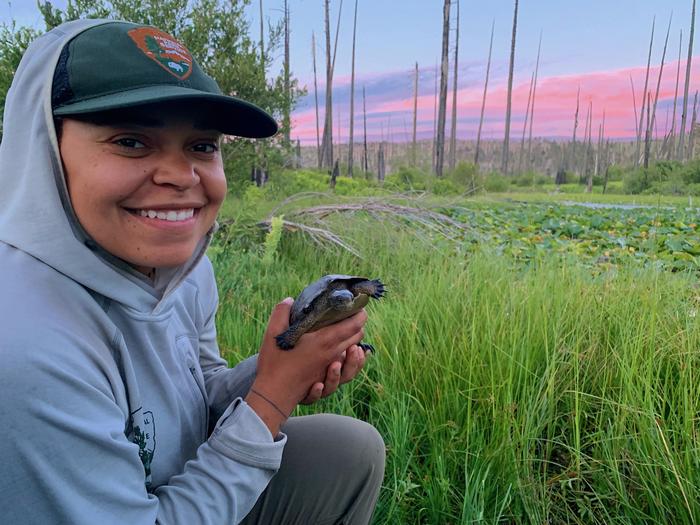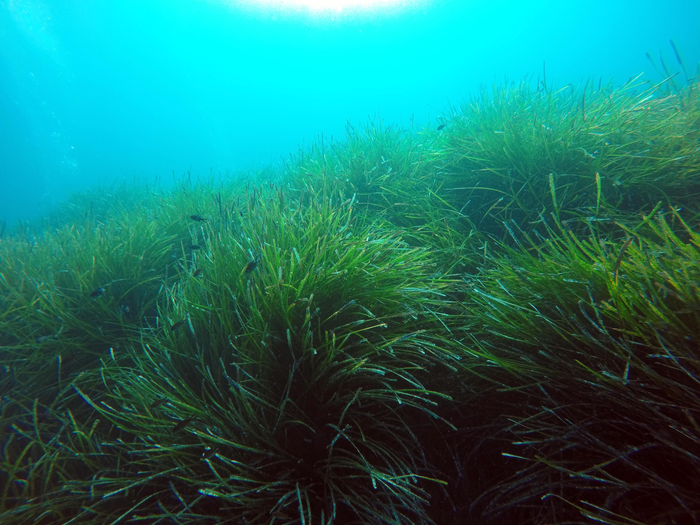In the heart of Yosemite National Park, a dramatic transformation is underway within its aquatic ecosystems, signaling a hopeful resurgence of native species long overshadowed by invasive intruders. For decades, the auditory landscape of Yosemite’s ponds was dominated by the raucous calls of the American bullfrog, a species introduced to the West from its native eastern United States habitats. These large amphibians, notorious for their voracious appetites, have exerted significant predation pressure on native wildlife, particularly the northwestern pond turtle (Actinemys marmorata). A rigorous seven-year experimental study led by scientists from the University of California, Davis, now reveals that targeted removal of these invasive bullfrogs can pave the way for the recovery of vulnerable turtle populations and restore the ecological balance of these freshwater systems.
The northwestern pond turtle, a species intrinsic to the Western United States and one of only two native freshwater turtles in California, has faced alarming population declines over recent decades. Its range, once sprawling from Baja California through to Washington State, has contracted dramatically, owing primarily to habitat degradation and the invasive bullfrog. Unlike the southwestern pond turtle, which inhabits more arid southern regions, the northwestern pond turtle thrives in the moist, temperate wetlands of Yosemite and surrounding areas. This species fulfills critical ecological roles, facilitating nutrient cycling and maintaining biological diversity in their habitats—a process severely disrupted by invasive species interference.
American bullfrogs, introduced in the 1950s across Yosemite, became alarming predators of juvenile freshwater turtles soon after their establishment. Measuring up to eight inches in length, bullfrogs possess powerful jaws and stomach enzymes capable of digesting a wide range of prey species, from amphibians to small mammals. Their predatory pressure disproportionately targets younger turtles due to size limitations, effectively creating demographic bottlenecks in turtle populations. These effects are compounded by bullfrogs’ loud, continuous nocturnal vocalizations that mask the calls of native species, further unsettling the natural auditory and ecological balance of the ponds.
Beginning in 2016, researchers from UC Davis initiated an intensive, multifaceted field study examining the impact of invasive bullfrog predation on the northwestern pond turtle populations at four distinct Yosemite sites. Two sites were characterized by established bullfrog populations, whereas two others remained largely bullfrog-free. Monitoring efforts included visual encounter surveys, capture-recapture techniques, and stomach content analyses of captured bullfrogs to ascertain their dietary impact. The data illuminated stark contrasts between these sites, providing compelling empirical evidence linking bullfrog presence with suppressed turtle recruitment and abundance.
At bullfrog-inhabited ponds, the turtle cohorts were disproportionately skewed toward older, larger individuals, often too substantial for bullfrogs to consume. Conversely, younger, smaller turtles were conspicuously absent. Stomach content analysis affirmed bullfrogs’ predation on juvenile turtles, alongside other native species such as newts, small birds, and rodents. This selective pressure effectively arrested population regeneration, as juvenile mortality sharply increased where bullfrogs were present. Size disparities revealed that turtles cohabiting with bullfrogs were up to 36% larger and 97% heavier than those in bullfrog-free waters, underscoring the survival bias toward larger age classes under predation threat.
The turning point in this ecological narrative arrived in 2019 when comprehensive eradication efforts precipitated a near-complete removal of bullfrogs from select study sites. Subsequent monitoring documented the first sightings of juvenile turtles at formerly bullfrog-occupied ponds, marking a pivotal milestone in restoration success. Juvenile turtle abundance surged, aligning with quantitative increases in overall turtle density—up to 100-fold higher in bullfrog-free habitats. These findings decisively indicate that invasive bullfrog removal directly facilitates native turtle population recovery, endorsing targeted eradication as a vital conservation management strategy.
Beyond the profound direct effects on turtles, bullfrog removal precipitated broader ecosystem rejuvenation. Field observations chronicled the resurgence of native amphibians, including frog species whose calls previously drowned beneath the bullfrogs’ cacophony. Salamanders and other aquatic vertebrates likewise exhibited increased activity, signaling restored trophic and ecological interactions. The reestablishment of native frog choruses as a natural acoustic backdrop not only denotes biodiversity recovery but may also serve as an indicator of aquatic ecosystem health and resilience following invasive species management.
The study’s authors underscore that whilst bullfrog eradication is not universally feasible, its implementation in selective, high-priority conservation areas can offer tangible benefits. Such locales are characterized by reduced risk of reinvasion and promising conditions for native turtle recovery. Comprehensive, adaptive management plans combining removal with habitat restoration bear potential to reverse decades of ecological damage inflicted by invasive bullfrog populations. These strategies align with broader conservation objectives aimed at preserving biodiversity and ecosystem services amid mounting anthropogenic pressures.
Ecologically, the importance of conserving the western pond turtle transcends its threatened status under the U.S. Endangered Species Act. As one of the few native freshwater turtles in the region, it embodies a unique evolutionary lineage and holds intrinsic natural heritage value. The loss of this species would signify not only a diminution of regional biodiversity but also a profound alteration of the ecological processes underpinning wetland function. Maintaining the health and persistence of these turtles ensures the continuity of critical nutrient cycling and energy transfer within aquatic environments, reinforcing ecosystem stability and productivity.
This research elucidates the intricate and often obscured dynamics of invasive species impacts, contributing to a growing body of evidence highlighting the interconnectedness of species within ecosystems. By combining field experimentation, long-term monitoring, and ecological restoration efforts, UC Davis scientists have demonstrated a tangible pathway for mitigating anthropogenically driven biodiversity loss. The dynamic interplay between predator and prey showcased in Yosemite offers valuable insights applicable to conservation programs globally confronting invasive amphibian species.
Of significant note is the collaborative nature of this study, incorporating expertise from federal agencies such as the U.S. Geological Survey, alongside non-profit conservation bodies and academic institutions. Funding streams from the Western Pond Turtle Range-wide Conservation Coalition, Yosemite Conservancy, and government research grants have underpinned sustained efforts to monitor, analyze, and ultimately restore pond turtle populations. This synergy between science, management, and policy exemplifies optimal approaches for tackling complex conservation challenges in modern ecosystems.
As Yosemite’s ponds once again echo with the calls of native amphibians and the subtle movements of recovering turtle populations, this study represents not only a triumph of ecological science but also a testament to humanity’s capacity to rectify past environmental missteps. The removal of invasive bullfrogs offers a beacon of hope for the restoration of natural balances, reaffirming the importance of evidence-based conservation initiatives in safeguarding the planet’s fragile biodiversity heritage for future generations.
Subject of Research: Effects of invasive American bullfrogs on native northwestern pond turtles and the ecological impact of their removal.
Article Title: Effects of invasive American bullfrogs and their removal on Northwestern pond turtles
News Publication Date: 19-Mar-2025
Web References: http://dx.doi.org/10.1016/j.biocon.2025.111090
References: Biological Conservation Journal, May 2025 issue
Image Credits: Courtesy Sidney Woodruff
Keywords: Conservation biology, Endangered species, Biodiversity conservation, Ecological restoration, Natural resources conservation, Wildlife management
Tags: amphibian predation effectsaquatic ecosystem transformationbullfrog removal impactCalifornia turtle populationsecological balance in wetlandsfreshwater species restorationhabitat degradation consequencesinvasive species managementnative turtle recoverynorthwestern pond turtle conservationUniversity of California Davis researchYosemite National Park ecosystems






